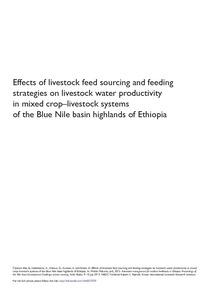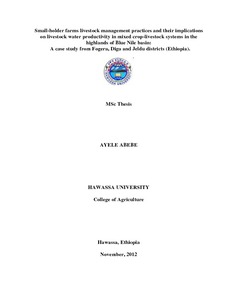Effects of livestock feed sourcing and feeding strategies on livestock water productivity in mixed crop–livestock systems of the Blue Nile basin highlands of Ethiopia
Inefficient management and use of water is unanimously the most single constraint of agricultural production of Ethiopia. The study was conducted to assess the effect of livestock feed sourcing and feeding strategies on livestock water productivity (LWP) in mixed crop–livestock production systems of the Blue Nile Basin in Ethiopian Highlands. Three districts representing diverse agricultural farming systems were considered. Each district further stratified to different farming systems. Multi-stage stratified random sampling technique was employed to select farm households.





